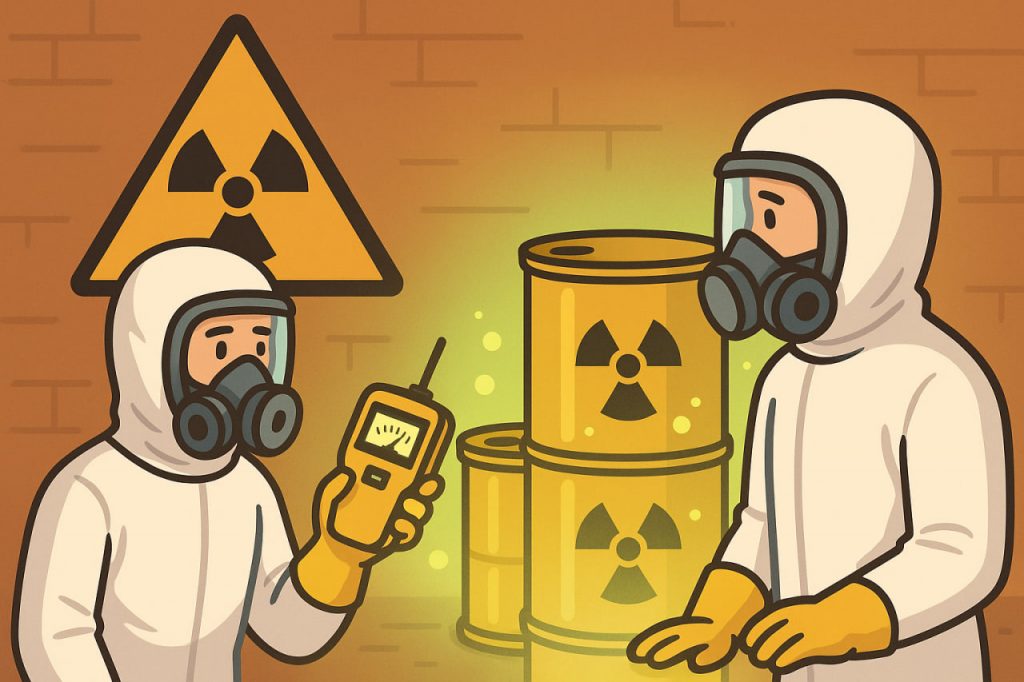Radiation is one of the most powerful and invisible forces in the universe. It surrounds us constantly — from the light of the Sun to the signals from our cell phones. However, not all radiation is harmless. Some types can damage living tissue, cause mutations, and even lead to severe illness or death. Understanding what radiation is and how to protect yourself from its harmful effects is essential in the modern world.
What Is Radiation?
Radiation is the emission and transmission of energy through space or a material medium. It can take many forms — waves, particles, or rays — and is classified into two main types: non-ionizing and ionizing radiation.
- Non-ionizing radiation includes visible light, infrared rays, microwaves, and radio waves. It does not have enough energy to remove electrons from atoms, so it’s generally safe in small doses.
- Ionizing radiation, on the other hand, has enough energy to alter atomic structure, creating ions. This type includes X-rays, gamma rays, and particle radiation from radioactive materials like uranium or plutonium. It is this form of radiation that poses the greatest risk to human health.
Natural and Artificial Sources of Radiation
Radiation is not only man-made — it is a natural part of our environment.
Natural sources include:
- Cosmic rays from outer space.
- Radon gas, which seeps from rocks and soil.
- Radioactive isotopes in the Earth’s crust, air, and even food.
Artificial sources include:
- Medical imaging (X-rays, CT scans, radiation therapy).
- Nuclear power plants and weapons.
- Industrial radiography and research applications.
While the human body can handle small natural doses, excessive exposure — especially to ionizing radiation — can be very dangerous.
How Radiation Affects the Human Body
When ionizing radiation passes through the body, it can damage or destroy cells and DNA. This leads to several possible outcomes:
- Cells repair themselves successfully — no lasting effect.
- Cells die, causing tissue damage.
- Cells mutate, potentially leading to cancer or genetic defects.
Short-term, high-dose exposure can cause radiation sickness, with symptoms such as nausea, vomiting, hair loss, and fatigue. Long-term exposure, even in smaller doses, increases the risk of cancer, infertility, and heart disease.
The Chernobyl and Fukushima Lessons
Two of the most well-known examples of radiation disasters — Chernobyl (1986) and Fukushima (2011) — show how dangerous uncontrolled radiation can be.
Chernobyl’s reactor explosion released enormous amounts of radioactive material into the atmosphere, contaminating large parts of Europe. Thousands of people suffered radiation poisoning, and entire regions remain uninhabitable decades later.
Fukushima’s disaster, caused by a tsunami, demonstrated how fragile even advanced safety systems can be in extreme conditions.
How to Protect Yourself from Radiation
While everyday exposure is usually harmless, it’s important to know how to minimize risk:
- Limit exposure — the less time spent near radiation sources, the better.
- Increase distance — radiation intensity drops sharply with distance.
- Use shielding — concrete, lead, and even water can block harmful rays.
- Follow safety regulations when working with radioactive materials.
- Monitor radiation levels in your area if you live near industrial or nuclear zones.
Radiation in Medicine and Technology
Despite its dangers, radiation also has enormous benefits when used properly.
- In medicine, radiation helps detect and treat diseases — from X-ray diagnostics to cancer therapy.
- In industry, it’s used for sterilization, energy production, and scientific research.
The key is controlled and safe use under strict regulations.
The Future of Radiation Safety
With the development of nuclear energy, space exploration, and medical technologies, humanity must balance progress with caution. Modern innovations, such as radiation-resistant materials and AI-based monitoring systems, are making it easier to use radiation safely.
Interesting Facts
- Every person receives an average of 2–3 millisieverts of natural background radiation per year.
- Bananas contain small amounts of potassium-40, a naturally radioactive isotope.
- Airline pilots and astronauts are exposed to more cosmic radiation than people on the ground.
- Radiation therapy is one of the most effective cancer treatments, despite involving controlled exposure.
- Lead aprons used during X-rays block over 90% of harmful rays.
Glossary
- Ionizing radiation — high-energy radiation capable of removing electrons from atoms, potentially damaging cells.
- Sievert (Sv) — unit of measurement for radiation dose received by humans.
- Half-life — the time required for half of a radioactive substance to decay.
- Radiation sickness — illness caused by acute exposure to large doses of ionizing radiation.
- Radon — naturally occurring radioactive gas that can accumulate in buildings.


